20+ Sample Quality Assurance Statement
-

Quality Assurance Statement Template
download now -

Basic Quality Assurance Statement
download now -
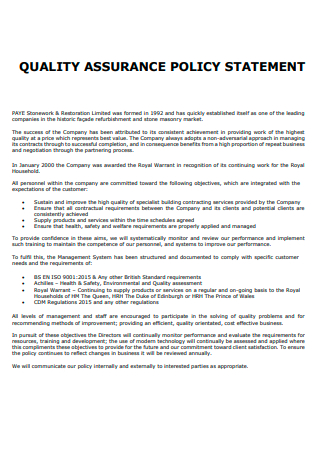
Quality Assurance Policy Statement
download now -

Quality Assurance Statement Example
download now -
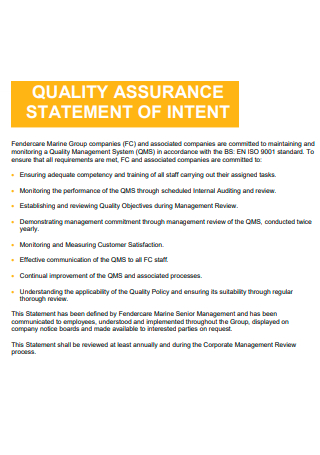
Quality Assurance Statement of Intent
download now -
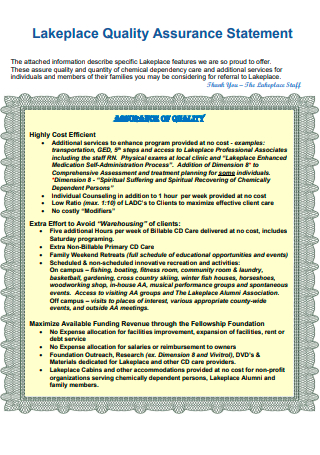
Lakeplace Quality Assurance Statement
download now -
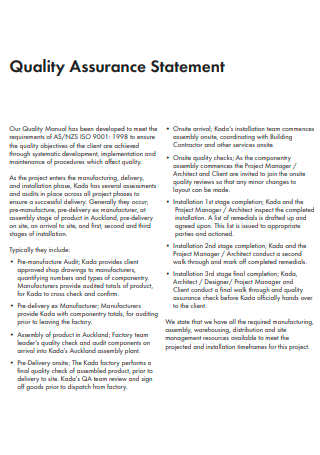
Standard Quality Assurance Statement
download now -
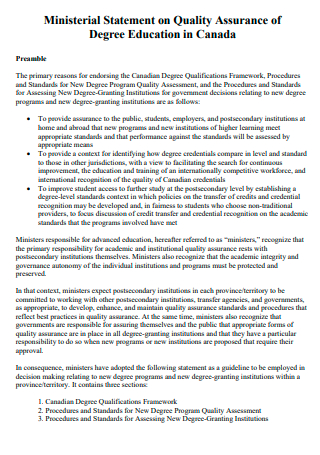
Quality Assurance of Ministerial Statement
download now -
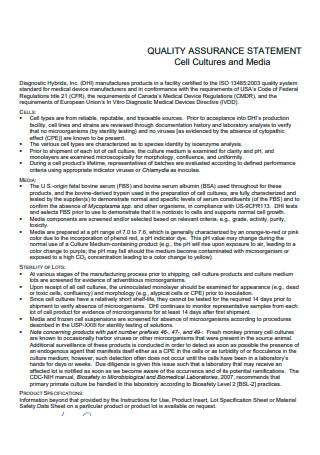
Quality Assurance Statement in PDF
download now -
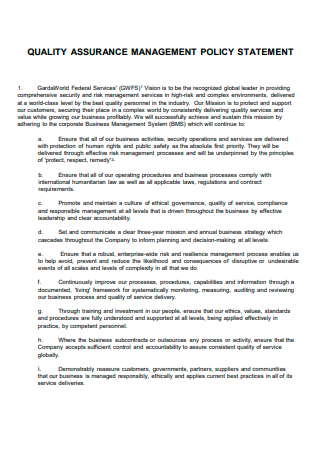
Quality Assurance Management Policy Statement
download now -
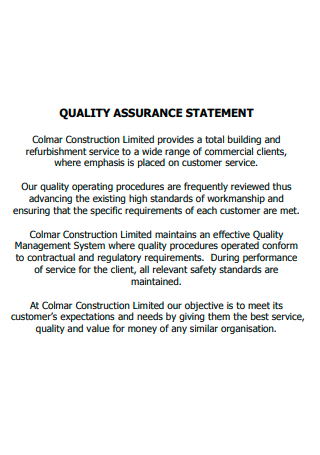
Formal Quality Assurance Statement
download now -
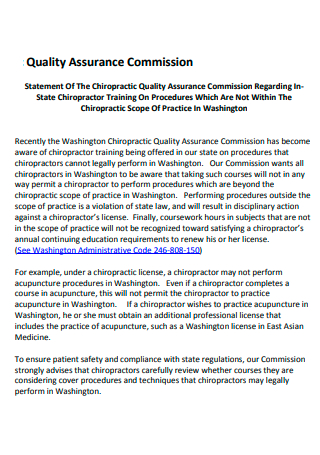
Quality Assurance Commission Statement
download now -
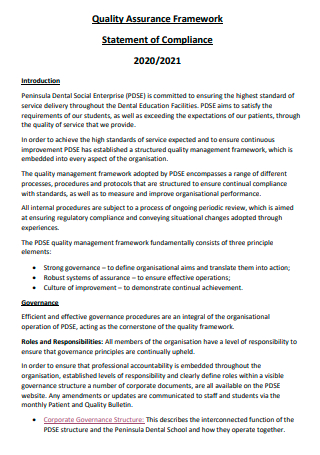
Quality Assurance Framework Statement of Compliance
download now -

Printable Quality Assurance Statement
download now -
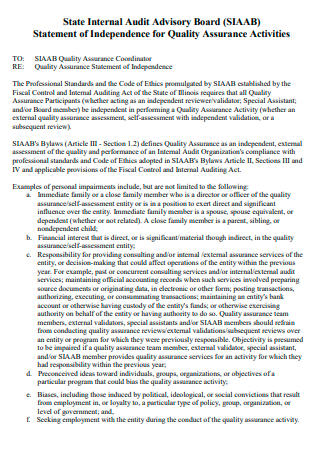
Quality Assurance Activities Statement
download now -
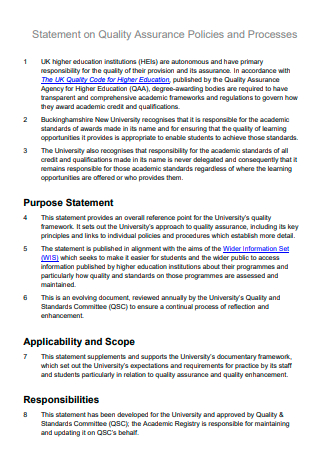
Quality Assurance Policies and Processes Statement
download now -
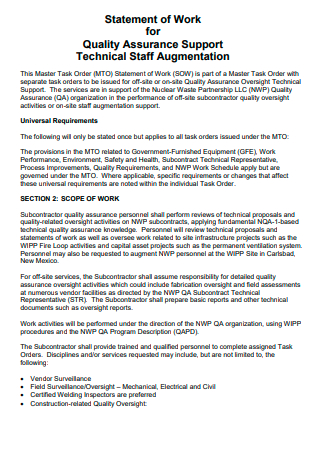
Quality Assurance Statement of Work
download now -
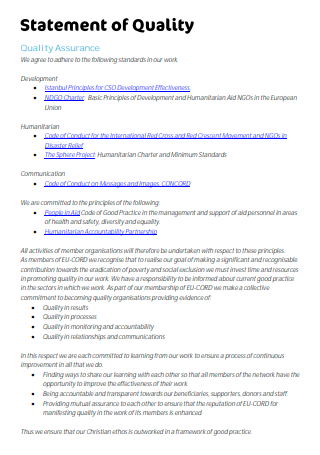
Simple Quality Assurance Statement
download now -
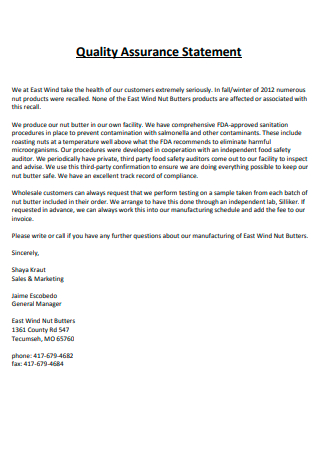
Draft Quality Assurance Statement
download now -

Quality Assurance Planning Document Statement
download now -
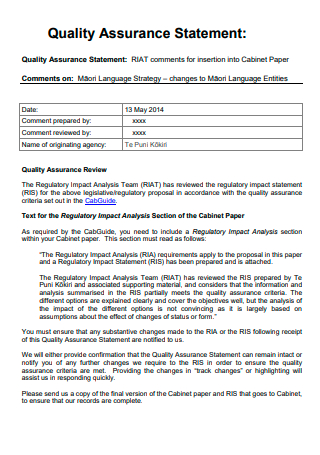
Quality Assurance Statement Format
download now
FREE Quality Assurance Statement s to Download
20+ Sample Quality Assurance Statement
What is a quality assurance statement?
Key Elements of a Quality Assurance Statement
How to Write a Quality Assurance Statement
What is a good quality policy?
What are quality standards?
What are the types of documents used in a quality management system?
What is a quality assurance statement?
A quality assurance statement is an official document issued by a certain company, whether in business or in manufacturing or supplying, claiming that the products and services that they give are those that are in high quality, and have undergone many procedures and trials and errors in order to make sure that they really live up to the standards that their own company says they ultimately hit. This is part of a business’s quality management system. In here, you are able to define what the extent of the “quality” is in your own terms, stating the different standards that you follow when developing these products at hand. This is also an official writing of the outlines of the important process that your products have gone through before the company puts these on sale. This is to signify that what you offer as a business or as a company is safe, and can surely satisfy the buyer in terms of meeting their expectations.
Key Elements of a Quality Assurance Statement
If you are one who has been tasked to write or formulate a quality assurance statement, it is important for you to know the key elements of such a document. In order for it to retain its legitimacy through its normative framework, you are to follow a specific outline which contains the needed information that the customer has to know in order to truly trust in your business or company, and for them to also thoroughly receive the details that you wish for them to know. Such a formal report is arbitrary for your buyer to decide whether or not to invest in your products or services, since the quality assurance statement gives them the leverage to trust you, and legitimizes the whole process you let your offered asset undergo before releasing. It also sets their expectations, hence, the quality assurance statement can allow you to have an edge compared to other corporations that are offering the same asset as well. These are the key elements of a quality assurance statement.
How to Write a Quality Assurance Statement
Now that you have information regarding the key elements of a quality assurance statement, it is time for you to know the process of how you can write one. The familiarization of this process is integral, considering that you may be assigned to make these statements more in the future. Ensuring that your quality assurance statement is well-written is very important, because these are documents which clients truly check and assess in order for them to decide whether or not to invest in your assets. With that being said, this is how you can write a quality assurance statement.
Step 1: Description of Your Company
The first thing you can write about in your quality assurance statement is a description of your company, the industry it belongs it, and its credentials as a legitimate and legal ongoing business. A general background may be included, and this is also where you can provide your general statement of quality assurance as mentioned in the former parts of the article. You are to formulate a good and precise description of your company because this establishes the first impression of the client.
Step 2: Management Principles
The management principles pertain to the values that you prioritize and follow within your quality assurance procedure. This also gives clients a sense of security, knowing that these are the core values that you have as a company. For example, you may write down that you value a risk-based process which examines your product to withstand certain extremes and still stand, the check and balancing of your product by professionals in order to make sure that it truly is of high-quality, and the proactive assessment of potential glitches that have already been preempted by your company, and that you have ultimately provided solutions for such.
Step 3: Quality Management Framework
This portion is where you can provide your framework or your outline, in order to make sure that the client knows the skeleton of your whole product-checking procedure. You are to provide a clear walk-through of the process here in order to make sure that details are included, in order to give your clients the confidence to invest on your product that you claim to be fool-proof, as your studies and experimentation show.
Step 4: Monitoring and Evaluation
In monitoring and evaluation, you are to state how your company has a department that monitors the manufacturing of these products and goods, and that these outputs are ultimately evaluated in order to truly secure their quality. This is additional information that may be needed and valued by clients, since this may seal the deal for them and truly clinch them into availing your asset.
Step 5: Compliance with Legal Requirements
It is important for clients to know that the business you are operating is approved by the state, and that you, as a company, have gathered all the necessary documents to be permitted to conduct a business. These are essential for clients to know since it is very risky for them to establish a partnership with a company that may be taken down in the future for legal reasons. With that said, make sure that you include legitimate certification, and other documents of proof in order to show that your company does comply with legal requirements, and that it is completely safe for them to trust you and establish a connection with you as a business.
What is a good quality policy?
A good quality policy is a short statement that shows the values of your company, your procedures which are aligned with the core values that you have set for yourself, and the statement of your promise to comply with safeguard and protective measures for your product. A good quality policy is something that is included in a quality assurance statement, as mentioned in the former parts of the article, albeit shown in great segregation from each aspect of the policy to the other.
What are quality standards?
Quality standards are documents that clearly define the specifications, procedures, and requirements that your company abides and complies with in order to make itself whole. Having good and high quality standards also improves the client’s trust and willingness to invest in your product, or in your company in general.
What are the types of documents used in a quality management system?
The different documents that are used in quality management systems are usually the procedure of quality assessment, legal forms, workflows, and quality policy. These things have different uses, the first one which is the procedure of quality assessment being the need for clients to know the step-by-step process of how the company assesses and provides check and balance for their products and services, the legal forms being the necessity of companies to comply with state and federal laws to be able to conduct business, the workflows being the need for the clients to have transparency over the inner workings of the company, and the quality policy being the need for the company to ultimately show the principles and values they hold in terms of providing service, or manufacturing products for their customers.
Quality assurance statements are important because they allow companies to market themselves in a way that they show the dynamics of their manufacturing process. This allows them to have more transparency, and for the clients to officially know the kind of ethics they hold, as well as their procedure of ensuring the quality that they promise. Ultimately, quality assurance statements make accountability easier for companies in order for them to truly abide by their promises and make sure that their assets are not defective, and can truly benefit and meet the needs of the clients in and of themselves.
